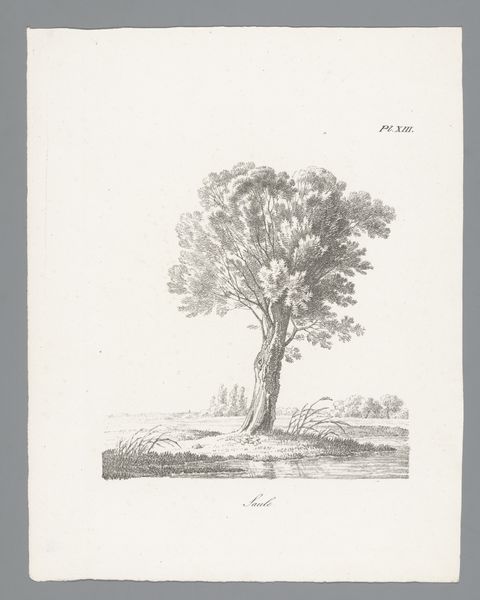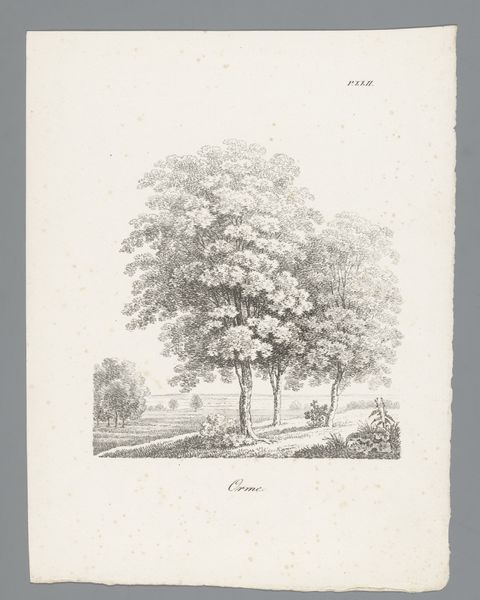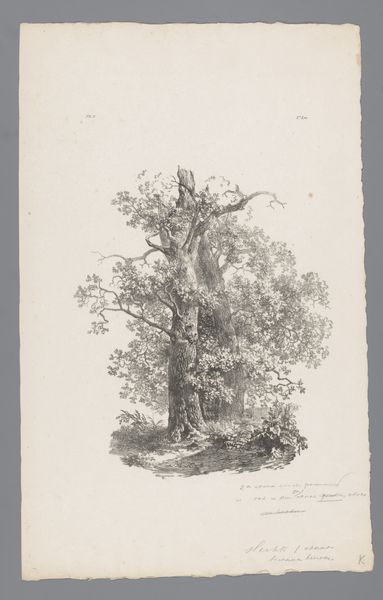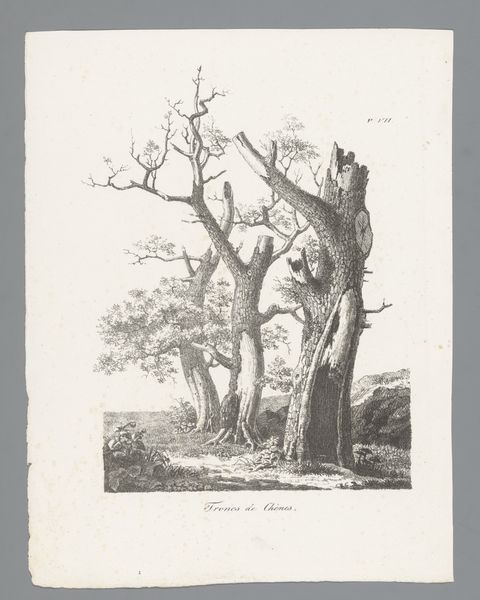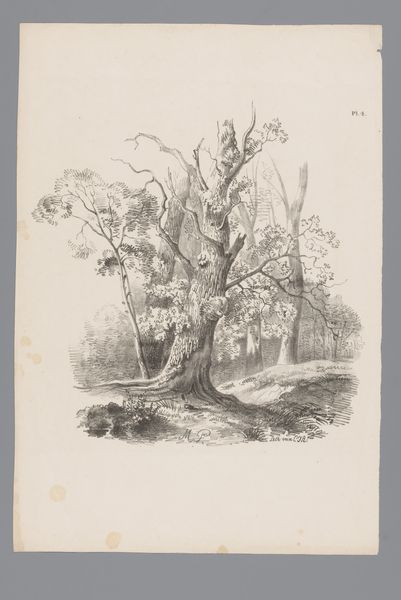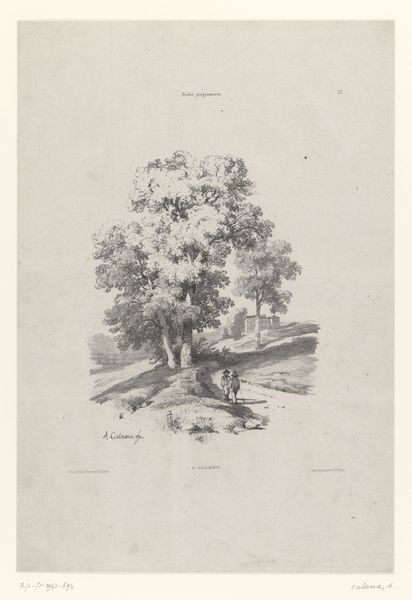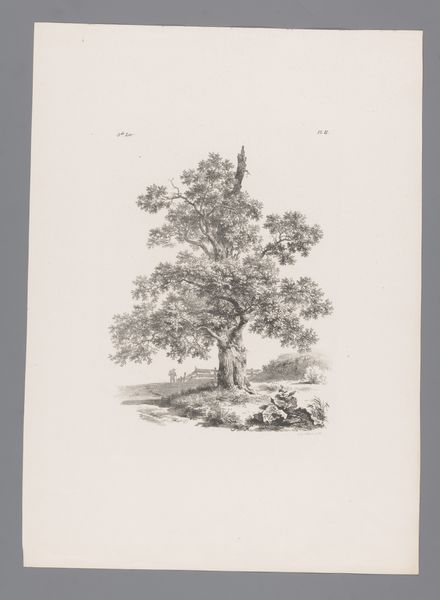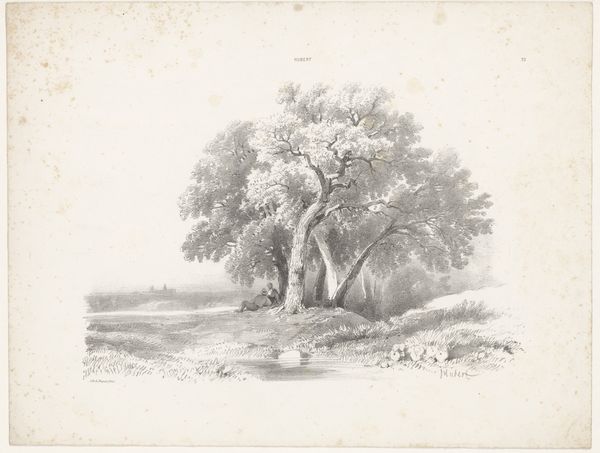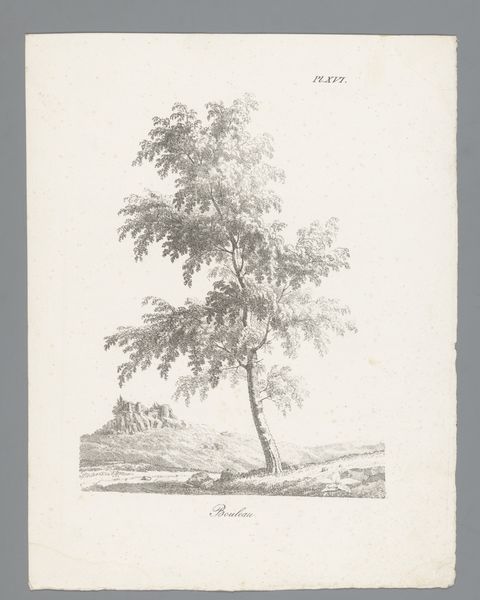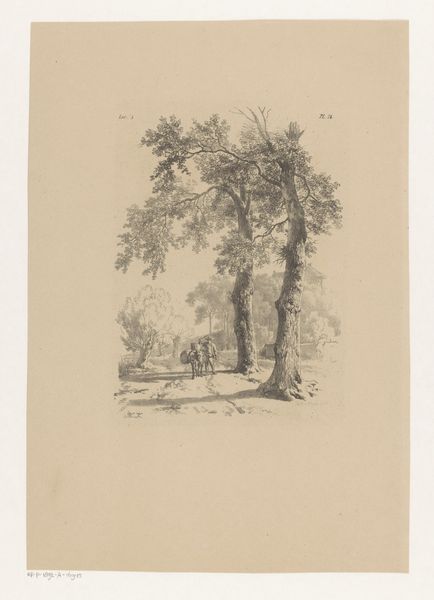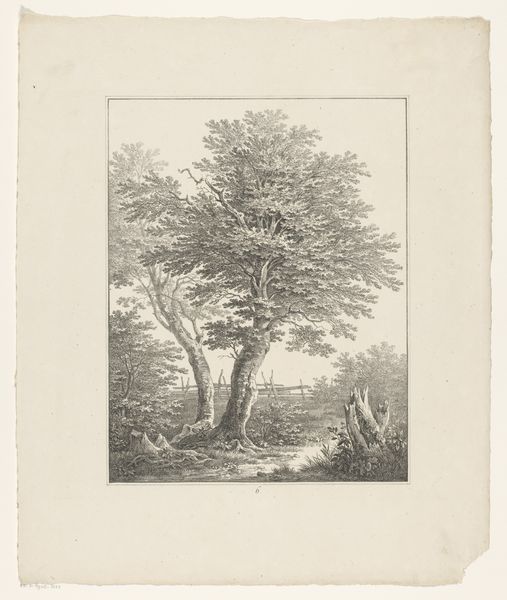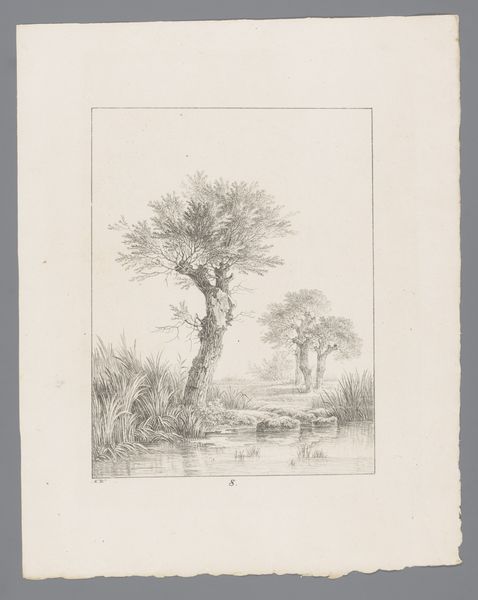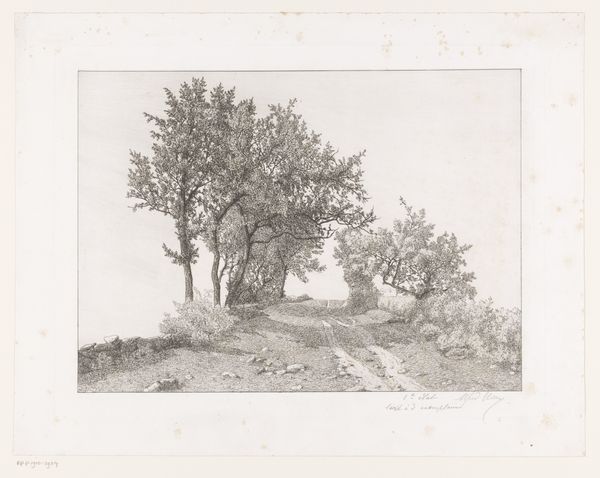
drawing, paper, pencil
#
tree
#
drawing
#
landscape
#
paper
#
road
#
romanticism
#
pencil
#
realism
Dimensions: height 359 mm, width 273 mm
Copyright: Rijks Museum: Open Domain
Curator: We're looking at "Gezicht op een landweg met rechts een gezelschap en een ezel," or "View of a country road with a company and a donkey to the right," attributed to Célestin Nanteuil, dating from 1823 to 1873. It’s a pencil drawing on paper. What strikes you about it? Editor: It feels quite dreamlike. There's a softness to the light, and the monochromatic palette lends it an ethereal quality. I’m drawn to the textural differences, especially how the roughness of the road contrasts the smoothness of the tree's bark. Curator: I'd agree with that, especially if we examine Nanteuil’s placement of the road. It’s rendered in swift, assertive lines, leading our gaze purposefully towards that resting group, an almost classical assembly seeking refuge under the verdant embrace of the trees. It speaks to me about labor, class dynamics, and perhaps even resistance during this period. The figures grouped there might find both comfort and temporary reprieve from their toils in the landscape, maybe as marginalized people in search of solidarity and collective action. Editor: And I wonder what materials were available. It’s incredible how a simple pencil and paper could depict such depth. But it's more than skill, of course; it’s the conscious act of representing laborers on their path that holds our attention, too. I agree: there's a connection to Romanticism, in this emphasis of the natural world and ordinary subjects. This choice alone makes a profound statement on artistic value, shifting the lens onto labor. Curator: Absolutely, though, to complicate this reading, let's note the influence of realism here as well: we cannot forget Nanteuil likely also observed similar subjects when going about his own life at the time and used their portrayal in this work. A complex mix of representing labor and a lived realism. Editor: Agreed, the technique conveys not just the subject, but a specific engagement with the scene. It urges us to consider where it was made, the act of artistic creation, who might have viewed this initially, and so forth. This prompts viewers like us to think critically about the societal structures and labor relationships being represented through seemingly humble materials. Curator: Looking at Nanteuil’s artwork has left me wondering more deeply about the intertwined narratives of marginalized communities within idyllic settings. The relationship between landscape and social issues has been a great reminder to contemplate further. Editor: And for me, it amplifies the value found within process and material itself. From paper to the deliberate pencil strokes, an aesthetic becomes deeply political by its engagement with social subjects.
Comments
No comments
Be the first to comment and join the conversation on the ultimate creative platform.
